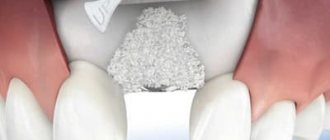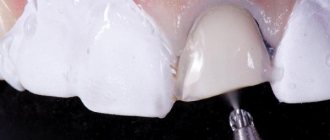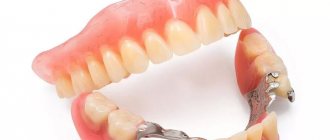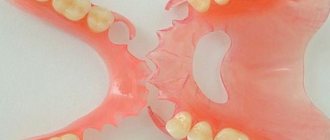Losing one or more teeth bothers many people, but is often not considered a good enough reason to visit the dentist. Moreover, some patients refuse to recover after surgical tooth extraction, preferring to ignore the problem for a long time. This behavior leads to the fact that further therapy becomes much more complicated and requires additional surgical interventions, in particular bone grafting.
Among the large number of methods for correcting the dentition, the most effective and closest to natural is the installation of a dental implant, which will become the basis for aesthetically designed crowns. Such a surgical intervention requires the presence of a sufficient volume of bone tissue at the site of fixation, since the implant must be securely fastened and withstand chewing loads. Not every patient has preserved the physiology of the alveolar process of the jaw in the place where the tooth is missing. Therefore, dentists have to perform an additional operation to restore tissue volume, which is called bone grafting. If this is not done, but implantation is performed under conditions of deficiency, then the following consequences appear:
- The bone continues to dissolve, and the process spreads to neighboring healthy areas.
- There is a gradual exposure of the implant neck, which disrupts the aesthetics of the structure.
- The implant becomes loose and cannot withstand standard loads on the jaw.
- The implant falls in or falls out because it is poorly fixed, and resorption progresses.
- Implant problems require additional dental work, which is not only costly, but also often results in additional bone loss.
The patient should know that atrophic phenomena in the alveolar process progress due to the lack of load on the bone. The longer he waits to go to the dentist, the more his bone dissolves and becomes deformed. In the most advanced cases, in the presence of additional triggers (age, cysts, etc.), the bone becomes so thin that spontaneous fractures occur.
Types of bone grafting
Bone tissue restoration for patients who require implantation can be of several types. The doctor selects the surgical technique based on the individual characteristics of the patient, which he receives after a comprehensive examination. The localization of the problem also plays an important role. In total, there are 4 methods for restoring the volume of the alveolar ridge, each of which has its own advantages and disadvantages.
Splitting of the alveolar process
A technique that allows you to effectively increase the thickness of the alveolar ridge on any part of the jaws. In modern dentistry, such bone grafting is considered the most successful if there is not enough bone width. In addition, it involves the simultaneous installation of implants, which reduces the duration of treatment by half. Splitting the alveolar process does not require the installation of expensive osteoplastic materials and protective membranes. The best choice would be natural bone material for bone grafting.
The main advantages of the technique:
- Fast and high-quality restoration of your own bone tissue due to the fact that the graft is immersed in the spongy layer of bone, where blood vessels are present in large numbers.
- It is possible to use cheap bone materials, which will still take root due to the three-way surrounding by vessels with nutrients.
- Simultaneous installation of implants (even if the implants are fixed after the bone material has engrafted, this will still require waiting only 3 months, which is much less than in other methods).
Such bone grafting to some extent compensates even for the height of the alveolar ridge, but is rarely used for significant thinning.
Bone block grafting
A technique for increasing the volume of bone tissue, which allows you to increase the alveolar process in width and height. This technique most often involves the use of an autogenous graft, which takes root most successfully and poses almost no risk of rejection. Places for collecting the block:
- tubercle of the maxilla;
- zygomaticalveolar ridge;
- chin area of the lower jaw.
They take root worse, but materials from another person and blocks of animal origin are also used.
The essence of the operation is to screw the bone block with special screws. The top of the structure is covered with special bone shavings and then limited by a protective membrane. After this, the doctor places stitches on the soft gum tissue. Here it is difficult and risky to immediately install implantations, so one-stage implantation is abandoned.
GTR or guided tissue regeneration
This technique includes the use of osteoplastic material for replanting and correction of atrophy in the height and width of the alveolar process, as well as a special collagen membrane. Such protective structures, which also make it possible to hold the graft in a certain place, can be resorbable, that is, they can dissolve on their own. Otherwise, additional removal of the structure is required.
The barrier membrane for NTR should be as strong as possible and clearly fix the bone material. Therefore, it is better to use titanium or other similar structures and not worry about the results of bone grafting.
Sinus lift
Sinus lift surgery is performed only on the upper jaw, since it is closely connected to the maxillary sinus. The essence of the surgical intervention is to lift the bottom of the maxillary sinus by peeling off its membrane from the periosteum and filling the space with a graft. There are several variations of this technique, but everywhere they try to use grafts of natural origin in order to increase the rate of engraftment and immediately install implants.
Sinus lifting can be lateral or vertical. The first option is also called open, since here surgical access to the maxillary sinus is drilled through the anterior surface of the gum. Vertical or closed (gentle) sinus lifting is performed through a pre-created implant bed, so it is considered less traumatic. The choice of technique lies on the shoulders of the dentist, since each technique has its own indications. In particular, closed surgery is not performed in conditions of excessive atrophy of the alveolar ridge.
Best Candidate for Dental Bone Implantation
Is it possible to install a dental implant without a bone graft? Good question and the answer is yes. Dental implants do not always require bone graft surgery. This is possible when you go to the dentist immediately after losing a tooth. However, if you wait a few months, the jawbone in the place of the missing tooth will begin to deteriorate. In these conditions, you will need a bone graft before getting a dental implant. Dental bone grafts are not just for implants. This surgery is necessary in circumstances such as gum disease, trauma and trauma to the jawbone, and developmental abnormalities. As a result, choosing an experienced dentist and using high-quality bone grafts allows the operation to be performed without complications.
Types of grafts for bone grafting
Natural bone material for bone grafting in modern medicine is not used as often as it seems. Innovative technologies for the production of artificial transplants make it possible to avoid many of the disadvantages and risks of using natural materials.
There are four types of grafts for bone grafting:
- Autogenous material. Transplants that are taken from different parts of the jaw, chin or hard palate from the patient himself. It takes root the fastest and most successfully, since it does not have antigens to which the human immune system will react. However, the installation of such grafts requires additional intervention. During the recovery period, multiple surgical approaches will need to be monitored and cared for.
- Allogeneic material. Natural bone material that is taken from another person. As a rule, corpses are used, that is, the use of such transplants requires special laws that allow the removal of any body parts from deceased people. Allogeneic material takes root less well, but is also absolutely safe, as it undergoes a number of treatments and quality controls.
- Xenogeneic transplant. Materials of animal origin are enjoying great success in modern technologies. They are made from bovine tissue and carefully modified into a human-fit structural design or shavings. By filling the space with such material, the doctor increases the likelihood of increased regeneration of the patient’s own bone.
- Synthetic material. Artificial structures are widely used for several reasons. The main one is the low cost of the material. In addition, the patient can have 100% no doubt about the safety of a synthetically created graft.
The patient is involved in the selection of material for bone grafting, since the financial side of the issue is not in last place. The dentist is obliged to explain to the person in detail all the features of natural and synthetic transplants, as well as recommend the most optimal options.
Oral care after surgery
After surgery to graft bone blocks, the patient is prescribed a course of antibiotics to prevent bacterial complications. During this period, it is extremely important for the patient to maintain oral hygiene: not only brush your teeth with a soft brush twice a day, but also rinse your mouth with an antiseptic after each meal.
It is also necessary to strictly follow the diet: do not eat hard, tough foods that can damage soft tissues and transplanted bone blocks. During the rehabilitation period, you should chew food on the side opposite to the operation site. And if discomfort in the mouth increases, bleeding and wounds appear on the gums, you should consult your doctor as soon as possible.
Features of natural bone material
Transplants created from organic materials have their advantages and disadvantages. Depending on the type of osteoplastic substance, its abilities will differ. Each graft has two main properties:
- promotes the regeneration of the patient’s own alveolar tissue;
- is a supporting structure for bone cells and foundations for their restoration.
Natural materials of human origin are maximally capable of increasing regeneration. This effect is especially enhanced if, during the process of bone grafting, the patient is given, in addition to the graft, concentrated blood, previously taken from a vein and subjected to centrifugation. Synthetic structures are more aimed at providing support for the atrophied alveolar ridge.
Patients are often wary of getting transplants from animals or other people because of the risk of developing diseases or the perceived high likelihood of rejection. In fact, the process of creating osteoplastic material in dentistry undergoes a number of control checks before it is allowed into dental clinics. None of the grafts pose any threat to the patient, so the risk of infection can be eliminated. However, less successful engraftment is indeed typical for such structures, so the doctor must take into account the individual characteristics of a person’s health. For example, elderly people rarely receive autogenous grafts, since it is dangerous for them to perform the additional step of tissue collection.
summary
A dental bone graft is a simple procedure used to replace missing jawbone. In this method, surgeons use different types of bone grafts according to the patient's needs and the severity of the problem. When is bone graft surgery necessary? If you know how dental implants are made, you will understand the importance of bone graft surgery. There must be enough bone in the jaw to hold the implant posts in place so that the tooth is securely anchored. Therefore, the use of bone grafts is essential for bone growth in the target area. If you are also a candidate for bone graft surgery and have questions about a specific topic, please write to us so we can guide you.
Alternative to natural material
Modern medicine is constantly creating synthetic structures for various applications. In dentistry, synthetic grafts are being actively modernized, which are much cheaper in cost, but are not inferior in performance to natural materials. It is recommended to use the most modern and proven types of synthetic grafts, because they take root best.
Some dentists completely abandon natural bone material for bone grafting and purchase artificial grafts. Most often they have a granular form, which allows you to quickly adjust the amount of bone restoration. The absence of an organic component in the material reduces immune incompatibility and minimizes rejection processes. Often, it is the use of synthetic grafts that allows immediate implantation and firmly fixation of artificial roots for future crowns.









